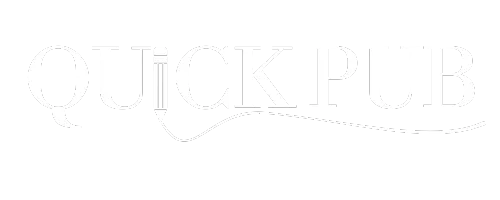See Our Latest Blogs
Stay updated with expert insights, publishing tips, and industry trends.

Self-Publishing vs. Traditional Publishing: Which is Right for You?
Self-Publishing vs. Traditional Publishing: Which is Right for You?
When deciding between self-publishing and traditional publishing, it’s essential to understand the financial implications and opportunities each path offers. Today’s self-publishing platforms provide access to global distribution, often rivaling the reach of traditional publishers. However, understanding how royalties and fees impact your earnings is key to making the right choice.
Self-Publishing:
Control and Profit: Retain full creative control over design, pricing, and marketing while keeping 100% of your royalties (minus standard processing fees).
Flexible Services: Quick Pub’s a la carte model lets you pay only for the services you need, such as editing, cover design, and marketing.
Global Distribution: Quick Pub ensures your book is available in bookstores, libraries, and online retailers, rivaling platforms like Amazon KDP and IngramSpark without taking a cut of your royalties.
Traditional Publishing:
Team Support: Offers access to professionals for editing, design, and marketing.
Prestige: Bookstore placement and traditional credibility may appeal to some authors.
Lower Royalties: Authors typically earn only 10-15% of sales while giving up creative control.
Longer Timelines: The process can take months or years, with no guarantee of acceptance.
Why Quick Pub Stands Out:
Author-Friendly Financial Model: Unlike Amazon KDP or IngramSpark, Quick Pub doesn’t take royalties; platforms only deduct minimal distribution fees.
Wide Reach: Quick Pub provides access to global markets, including bookstores and libraries, matching or exceeding the distribution networks of traditional platforms.
Tailored Solutions: Choose only the services you need, ensuring a cost-effective path to publishing success.

Self-Publishing: Control and Earnings Without Sacrifice
Self-publishing empowers authors to retain full creative control over their work, from design to pricing. You also keep a much larger share of royalties—often 70% or more—compared to the 10-15% offered by traditional publishers. Platforms like Amazon KDP and IngramSpark may seem attractive for their distribution reach, but their royalty fees and printing costs significantly reduce your profits.
With Amazon KDP, for instance, authors only receive 60% royalties on print books, minus printing costs, and their ebook royalties can drop to 35% if pricing falls outside specific ranges. IngramSpark requires authors to set retail discounts (commonly 30-55%) and deducts these along with printing costs. Quick Pub takes a different approach: we don’t claim your royalties. You retain 100% of your profits, only paying for the services you choose, along with standard processing fees for distribution.
Traditional Publishing: Prestige at a Cost
Traditional publishing offers an established team for editing, design, and marketing, as well as the possibility of prestigious bookstore placement. However, these perks come with a price: slower timelines, limited creative control, and significantly reduced royalties. In most cases, you’re essentially funding the publisher’s efforts with a large portion of your earnings.
Why Quick Pub Stands Out
When you distribute your book through Quick Pub, the platforms take their distribution profits as standard practice, but these are minimal compared to the royalty fees you’d lose with services like Amazon KDP or IngramSpark. Quick Pub’s a la carte model lets you choose only the services you need—editing, cover design, ISBNs, or marketing—so you’re not locked into paying for unnecessary extras. This model ensures authors maintain complete control over their books and maximize their earnings.
Quick Pub is designed to combine the reach and resources of traditional publishing with the freedom and profitability of self-publishing. Whether you’re an experienced author or just starting your journey, Quick Pub offers a smarter way to publish, empowering you to focus on what you do best—writing.
Your Story, Your Way.
Maximize Profits, Minimize Hassle.
© 2024 Quantum Collective LLC

